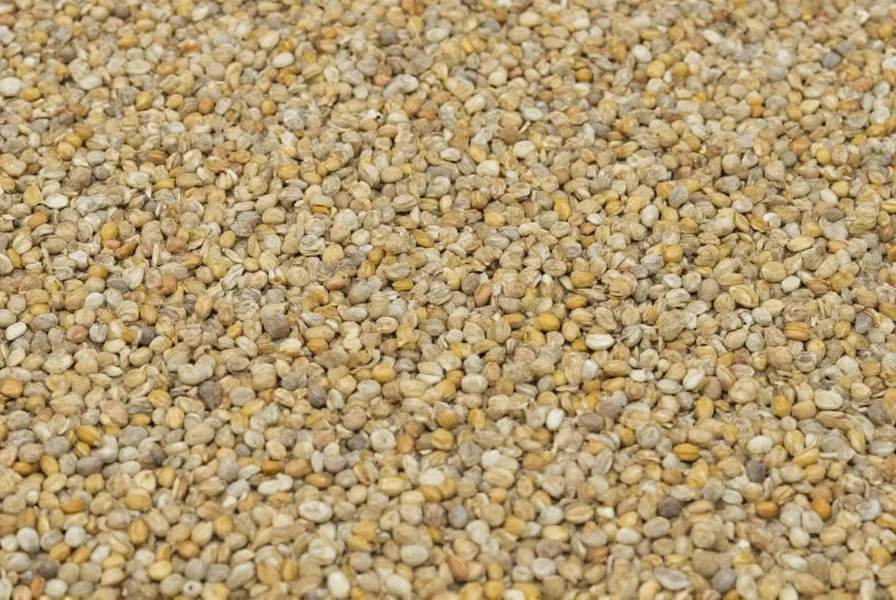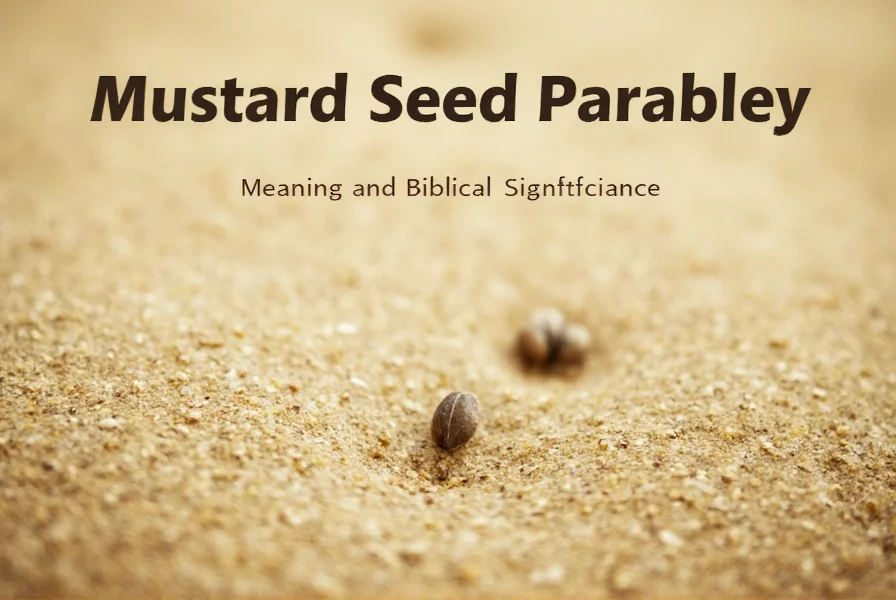The mustard seed parable stands as one of Jesus' most vivid illustrations about the nature of God's kingdom. This agricultural metaphor appears across three Gospel accounts, each providing slightly different nuances while maintaining the core message about exponential growth from minimal beginnings. Understanding this parable requires examining its historical context, theological implications, and practical applications for contemporary spiritual life.
The Scriptural Accounts
Each Gospel writer presents the mustard seed story with unique details that enrich our understanding. In Matthew 13:31-32, Jesus states: "The kingdom of heaven is like a mustard seed, which a man took and planted in his field. Though it is the smallest of all seeds, yet when it grows, it is the largest of garden plants and becomes a tree, so that the birds come and perch in its branches."
Mark 4:30-32 adds that the mustard seed "is smaller than all seeds on earth
" yet grows "taller than all garden plants
. Luke 13:18-19 frames it as "the kingdom of God is like a mustard seed that a man took and planted in his garden
.
| Gospel | Key Details | Unique Emphasis |
|---|---|---|
| Matthew | "Smallest of all seeds," becomes a tree | Kingdom of heaven |
| Mark | "Smaller than all seeds on earth" | Exaggerated comparison |
| Luke | "Planted in his garden" | Intentional cultivation |
Historical Context of the Mustard Seed
Understanding the mustard seed parable about mustard seed requires knowledge of 1st-century Palestinian agriculture. The black mustard plant (Salvadora persica) commonly grown in that region reached heights of 8-10 feet—remarkable for a plant growing from a seed measuring only 1-2 millimeters. While Jesus' description of it as "the smallest of all seeds"
employs deliberate hyperbole, the comparison would have resonated powerfully with his agrarian audience. The reference to birds nesting in its branches echoes Old Testament imagery, particularly Ezekiel 17:23 and Daniel 4:12, where large trees symbolize kingdoms providing shelter.

Theological Interpretation of the Mustard Seed Parable
The mustard seed parable explained reveals profound theological insights about God's kingdom. Unlike the "faith as mustard seed"
saying in Matthew 17:20, this parable focuses not on individual faith but on the nature of God's reign. The meaning of mustard seed parable centers on three key aspects:
- Unexpected Growth: From microscopic beginnings to substantial presence
- Divine Initiative: God plants and cultivates the kingdom
- Inclusive Community: The mature plant shelters diverse birds, representing inclusion of all peoples
This interpretation of mustard seed story challenges expectations of how God's kingdom operates—gradual rather than immediate, organic rather than forced, inclusive rather than exclusive. The parable offers hope during periods when God's work seems insignificant, reminding believers that small beginnings can yield extraordinary results through divine power.
Common Misinterpretations to Avoid
Many readers mistakenly apply the mustard seed parable to personal faith development, confusing it with Jesus' separate teaching about moving mountains with faith "as small as a mustard seed"
(Matthew 17:20). The biblical interpretation of mustard seed story specifically addresses the kingdom's growth pattern, not individual faith capacity. Another frequent error involves overemphasizing the mustard plant's invasive nature—while mustard could spread aggressively in ancient agriculture, Jesus' audience would have recognized it as a valuable garden plant, not a weed.
Practical Applications for Modern Believers
The spiritual significance of mustard seed remains profoundly relevant today. When ministries seem small or insignificant, this parable about mustard seed encourages perseverance. It teaches us to value humble beginnings, trust in God's timing, and recognize that substantial impact often emerges from modest starts. Churches experiencing slow growth, missionaries in challenging fields, and individuals feeling their contributions are minimal can find encouragement in this teaching. The parable of the mustard seed explained reminds us that God's work often defies human expectations of scale and speed.
Enduring Relevance of the Mustard Seed Teaching
Two millennia after Jesus spoke these words, the mustard seed parable continues to inspire believers worldwide. Its message transcends cultural boundaries, speaking to anyone who has witnessed small efforts yielding remarkable results. The kingdom of God mustard seed meaning challenges contemporary notions of success measured by immediate visibility or size. Instead, it invites patience, faithfulness in small things, and trust in God's capacity to multiply humble offerings. This parable remains a cornerstone for understanding how divine work progresses in human history—gradually, organically, and ultimately transforming the landscape.
Frequently Asked Questions
What is the main message of the mustard seed parable?
The primary message is that God's kingdom begins humbly but grows into something substantial that provides shelter and community. Despite starting small like a mustard seed—the smallest of seeds in Jesus' agricultural context—it develops into a large plant where birds can nest, symbolizing how God's reign expands from modest beginnings to impact many lives.
How does the mustard seed parable differ from 'faith as a mustard seed'?
These are two distinct teachings. The mustard seed parable (Matthew 13, Mark 4, Luke 13) describes the kingdom of God's growth pattern. The 'faith as a mustard seed' saying (Matthew 17:20) addresses the power of genuine faith. Confusing these leads to misinterpreting the parable as being about individual faith size rather than kingdom development.
Why did Jesus use the mustard seed specifically in this parable?
Jesus chose the mustard seed because it was recognizable to his audience as the smallest commonly planted seed in Palestinian agriculture, yet it produced one of the largest garden plants. This dramatic contrast between tiny beginning and substantial outcome made it an effective teaching tool about God's kingdom growth pattern.
What does the birds nesting in the branches represent?
The birds nesting in the mustard plant's branches symbolize the inclusive nature of God's kingdom, extending shelter to diverse peoples. This imagery connects with Old Testament references (Ezekiel 17:23, Daniel 4:12) where large trees represent kingdoms providing refuge. In Jesus' context, it suggested God's kingdom would welcome people from all nations, not just Israel.
How should modern believers apply the mustard seed parable?
Modern believers can apply this teaching by trusting God's work even when results seem small, valuing humble beginnings, and recognizing that significant impact often emerges from modest starts. It encourages patience in ministry, faithfulness in small tasks, and confidence that God can multiply seemingly insignificant efforts into something that provides spiritual shelter for many.











 浙公网安备
33010002000092号
浙公网安备
33010002000092号 浙B2-20120091-4
浙B2-20120091-4